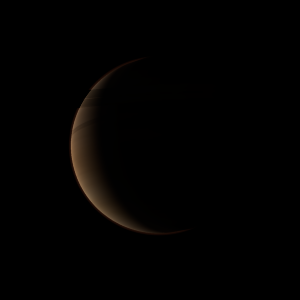|
|
Space Astro
|
Info for exoplanet "Pataki'rawata"
| Scientific (actual) data |
|---|
| Planet | HD 126053 B |
| Planet status | Confirmed |
| Planet mass | 35 |
| Radius | 0.9 |
| Semi major axis | 2630 |
| Discovered | 2012 |
| Updated | 2019-01-24 |
| Log g | 5 |
| Publication | Published in a refereed paper |
| Detection type | Imaging |
| Mass detection type | Spectrum |
| Alternate names | BD+01 2920 B, WISE J142320.84+011638.0 |
| Star name | HD 126053 A |
| Right ascension | 215.81° |
| Declination | 1.24° |
| Mag v | 6.27 |
| Mag i | 5.39 |
| Mag j | 5.05 |
| Mag h | 4.81 |
| Mag k | 4.64 |
| Star distance | 17.4385 |
| Star metallicity | -0.38 |
| Star mass | 0.87 |
| Star sp type | G1V |
| Star age | 8.5 |
| Star temperature | 5750 |
| Star alternate names | BD+01 2920, HIP 70319, 2MASS J14231528+0114294 |
| Wikipedia article | HD 126053 B |
Back
| |
| Fictional info (?) |
|---|
| Suggested name | Pataki'rawata |
| Planet type | Huge cold gas giant |
| Pataki'rawata's atmosphere is similar to Zechu's in its primary composition of oxygen and water, but it contains more "ices" such as water, ammonia, and methane, along with traces of other hydrocarbons. The planet is named after the deity Pataki'rawata, the god of dreams.
The carbon dioxide has probably photodissociated, and the free oxygen has been swept into interplanetary space by the solar wind because of the lack of a methane layer.
Pataki'rawata was one of the first planets to have its motions plotted across the sky - as early as the second millennium BC.
Pataki'rawata's hazy atmosphere make observation of its surface challenging in visible light, and the first detailed maps did not emerge until the arrival of the Magellan orbiter 64 years ago.
Planet is occupied by unpredictable and stone-age bacteria called the "Byupya'myamya". They survive in caves by seeking the Byokya Hya plant. Byupya'myamya are related to Shuryo and have 7 eyes and vary in size from 50 to 100 meters. Byupya'myamya are able to thrive at temperatures from -90 to -50°C and also severe infection. |
| Estimated population | 10000000000 |
| Atmosphere | Oxygen | 84% |
| Water | 13% |
| Carbon dioxide | 1.9% |
| Methane | 0% |
| Atmospheric pressure | 0.009 bar |
 |
| Moon | Bikujo | Very small round ice asteroid |
| Hyukigi-gazobi | Large round oceanic comet |
| Noshu Gunyo Nuda | Huge potato shaped gaseous comet |
| Zapya-zeku | Large round crater-filled moon |
| Kochijo'kyagu | Medium-sized round crater-filled moon |
| Kijuwo-magya Ru | Small slightly egg-shaped gaseous moon |
| Kyubo | Very small irregular oceanic asteroid |
| Bebu Tsugi Pya | Very small almost round oceanic planetoid |
| Pahi Neka | Large round rocky planetoid |
| Kyoumo | Very small almost round rocky asteroid |
| Kyuhyasu-gyogya | Large round gaseous asteroid |
| Hekochu Cha | Medium-sized irregular oceanic asteroid |
| Pyoso | Small potato shaped oceanic moon |
| Ikomyo Kya | Huge round crater-filled moon |
| Kyapyo'ro | Very small round crater-filled moon |
| Yaripya Gyugya | Large almost round rocky comet |
| Pyosho | Very small almost round ice moon |
| Jipyubyo-bi | Very small slightly egg-shaped gaseous moon |
| Shodosho Mesho | Medium-sized slightly egg-shaped rocky moon |
| Geagyubya Jigyu | Medium-sized potato shaped rocky asteroid |
| Dome | Huge irregular crater-filled planetoid |
| Google search for Pataki'rawata |
|
Website by Joachim Michaelis
|
|
|
|